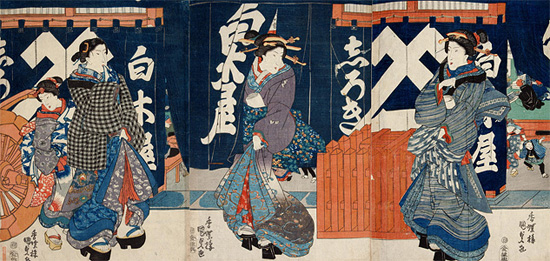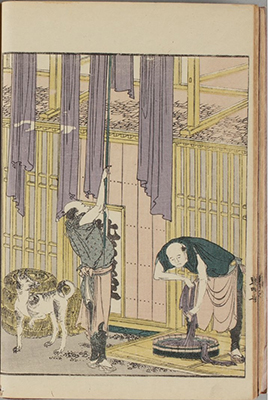Great-Edo Style
Great-Edo Fashion / Great-Edo GourmetTransition from Linens to Cottons
There were many wholesale textile merchants who purchased and sold cottons in Õdenma-chô (present day Nihonbashi in Chûô-ku), which were called "momen-dana" (literary means "cotton merchant"). It must be noted that the development of cotton industry transformed the fashion of Edo. The period saw the transition of one type of clothes to another on the streets, as the linens worn by the people in the past could no longer be seen so often in public and it was replaced almost completely with cottons. Cotton is strong as well as nice and soft when touching it, and besides competent for moisture alsorption. Moreover, as it can be dyed easily, the fabric began to be adopted for casual-style kimono called "hitoe" (literally means "single-layered clothing") such as yukata, as well as for other products such as a padded dressing gown (i.e. wataire), socks (i.e. tabi) and bedding. Furthermore, unlike expensive silk, cotton was not a costly fabric, and thus, it soon became popular among the people and grew into absolutely necessary products.
Compiled by Asakusa-an and painted by Katsushika Hokusai 1802 (Kyōwa 2)
This, however, can be said that it occurred as a result of the encouraging policies about making cottons of the Tokugawa Shogunate as well as of the local feudal domains across the country. Especially, both Kansai region and Tôkai region were famous for their cotton products. These cottons were transported from these regions to the city of Edo, and many towns consisting of wholesale cotton merchants were developed here and there in the city of Edo. One famous example of this is Õdenma-chô.
* To view more explanation, please click the each image.



